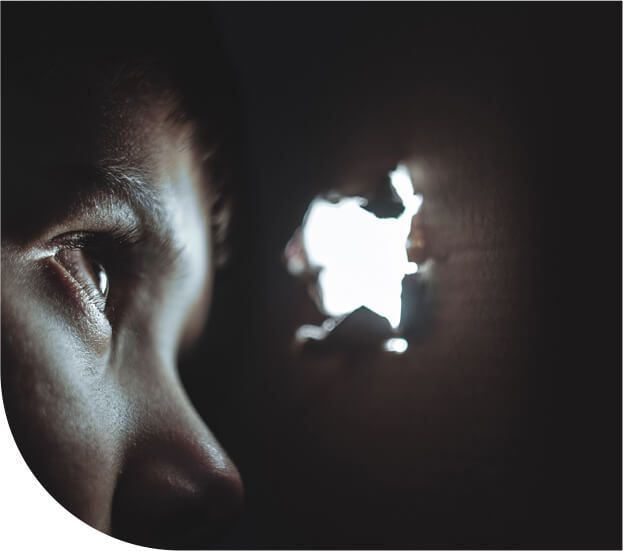Eye-Related Chronic Conditions
Graves’ Ophthalmopathy

What is Graves’ Ophthalmopathy?
In Graves’ ophthalmopathy, the overactive thyroid targets the area surrounding the eyes and may cause inflammation, redness, achiness, pink eye, eyelid retraction and bulging eyes.
Although Graves’ ophthalmopathy is caused by a hyperactive thyroid, the hormones that affect the eyes are not the same ones that cause reactions in other parts of the body. In roughly 10% of cases, people with Graves’ ophthalmopathy do not actually have Graves’ disease.
In extreme cases of Graves’ ophthalmopathy, swollen eye muscles may put extreme pressure on the optic nerve, leading to double vision.
Causes
Graves’ ophthalmopathy is an autoimmune condition where the thyroid gland mistakenly senses harmful cells and releases antibodies to combat them. Since there are no harmful cells, the released antibodies end up fusing with muscles in the eyes, causing the onset of Graves’ ophthalmopathy.
Symptoms
An eye care professional can determine the presence of Graves’ ophthalmopathy by carrying out a thyroid function test after observing common symptoms.
The most common symptoms of Graves’ ophthalmopathy are associated with inflammation, swelling and redness of the eyes. Symptoms vary from person to person and can include:
- Eye inflammation
- Eye redness
- Bulging eyes
- Eye dryness
- Eye weakness
- Eye sensitivity
- Eyelid retraction
Treatment
Symptoms of Graves’ ophthalmopathy may clear without intervention within a year. Many patients will need to continue treatment to regulate the overactive thyroid and/or continue with symptom-based treatments. These may include:
Symptom-based treatments
- Medication – includes topical lubrications such as artificial tears, and other treatments to relieve eye inflammation and lubricate bulging eyes
- Surgery – surgical options are available for several symptoms of Graves’ ophthalmopathy, including procedures to remove portions of the orbital region to make room for swollen tissue; realign weakened eyes to prevent double vision; and relieve discomfort and appearance issues associated with retracted eyelids
These symptoms can also be a sign of other eye conditions. If you have any of the symptoms, please check with your eye care practitioner.

